The American solar industry is holding its breath as it awaits the U.S. International Trade Commission’s coming vote on remedy recommendations in the landmark Section 201 trade case. These recommendations will then be delivered to President Trump, who holds protectionist economic views and reportedly requested that someone in the Oval Office “bring [him] some tariffs.”
With the outcome pending, GTM Research just published an updated analysis on the current state of U.S. solar and what might happen if various levels of tariffs are enacted. Clients can access the full report, data and methodology in their research portal.
One cautionary note: Our team has been working on this analysis for over a month, so our scenarios (which range from 10 cents per watt to 40 cents per watt cell tariffs, in increments of 10 cents per watt) don’t perfectly match with either Suniva's or SolarWorld’s proposed remedies. But SolarWorld’s request aligns closely with our 30 cents per watt cell tariff, and Suniva’s request is close to our 40 cents per watt cell tariff scenario.
On to the analysis.
First, what’s happening in the U.S. solar market today, even before any remedies are imposed?
Tariff risk has caused module prices to increase, a phenomenon unique to the U.S.
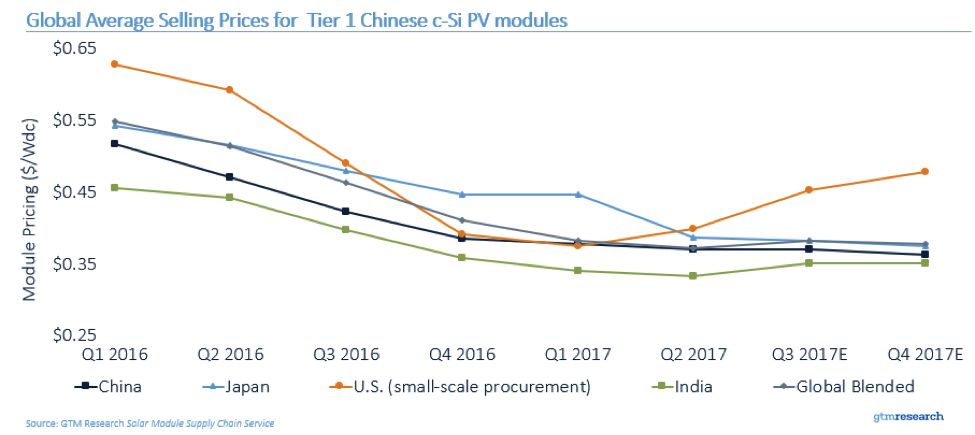
And while cost reductions in other parts of the system make up some of the difference, the cost to install solar has increased for the first time in ages.

So what comes next?
The ITC will vote on October 31 on a remedy recommendation, and Trump will have until January to make a decision

Assuming import tariffs are imposed, what will happen?
First, we estimate that there will be nearly 5 gigawatts of solar capacity that is not subject to tariffs, either because it is not subject to the scope of the petition (i.e., thin film) or because both the cells and modules are manufactured in the U.S., Singapore, Canada or Australia, all of which could (at the president’s discretion) be exempt. In addition, over 2 gigawatts of modules have already been procured for 2018 projects, which will temporarily dampen the tariffs’ impact on demand.
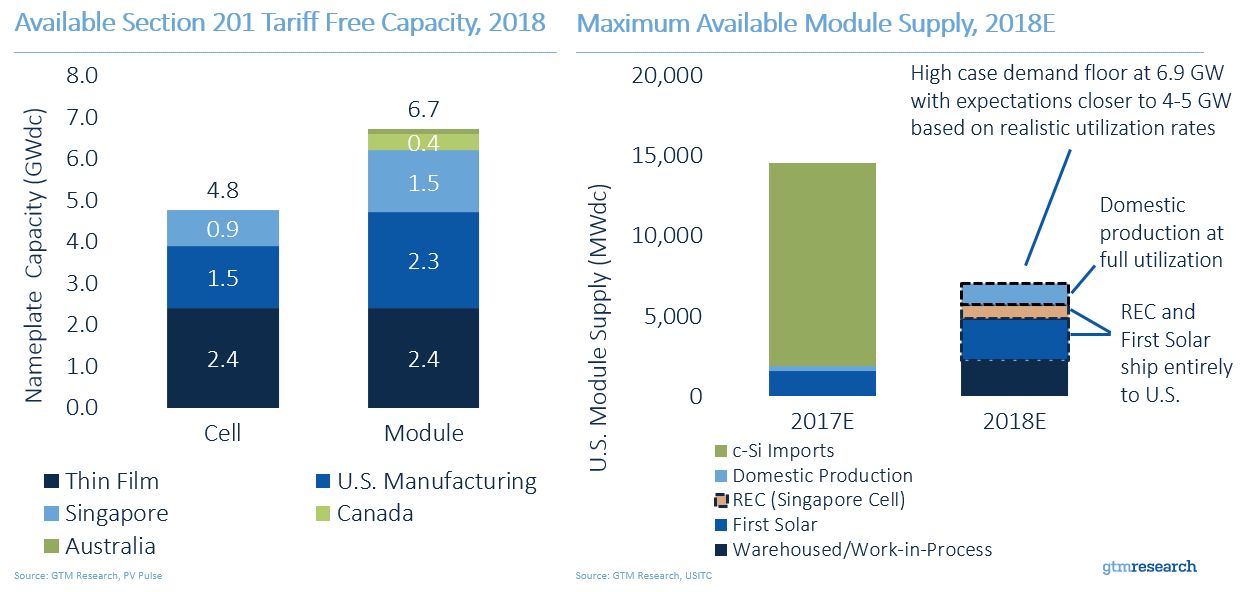
Those 5 gigawatts won’t be nearly enough to sustain the market, which is otherwise expected to reach nearly 11 gigawatts in 2017, rising to more than 16 gigawatts by 2022. So how much will tariffs impact demand otherwise?
We estimate that the net impact to our base forecast could range from just 9 percent under a 10-cents-per-watt tariff to 48 percent under a 40-cents-per-watt tariff. The biggest impacts would be in the utility-scale solar sector, which is most sensitive to price increases, while the residential sector would be the most resilient.

Every segment, in every state, will be impacted in a unique manner. In the residential sector, the biggest volume impacts would be felt in the largest state markets, but nascent state markets that have just begun to develop vibrant residential solar sectors could disappear almost entirely.
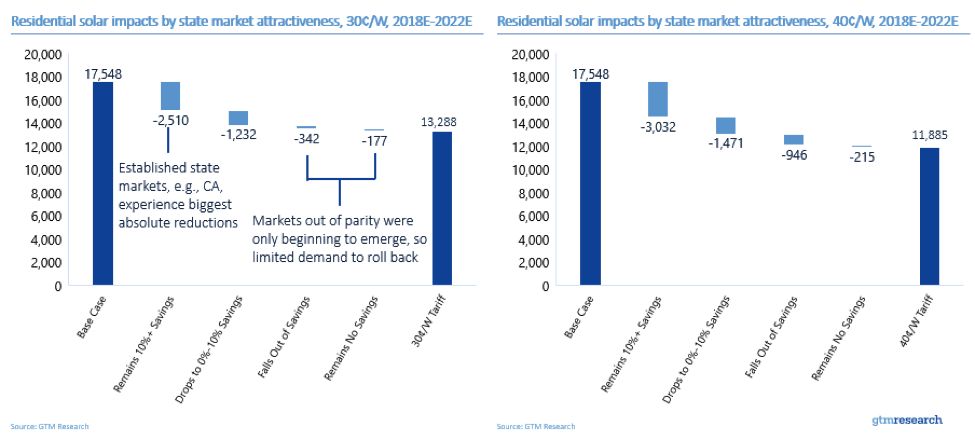
The utility-scale market would be most sensitive, because two-thirds of the project pipeline is driven by solar’s razor-thin economic competitiveness with other generation sources.
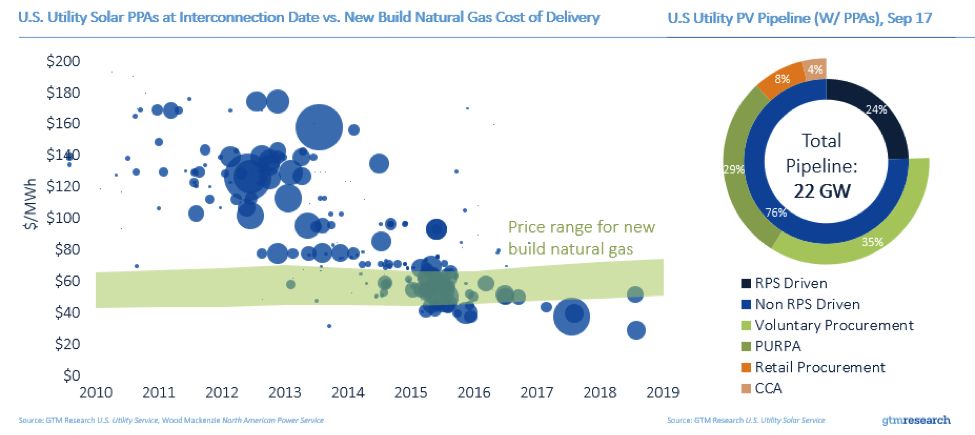
But even the utility solar market could weather a 10-cents-per-watt cell tariff with relatively minimal disruption -- just over 10 percent by our estimate.
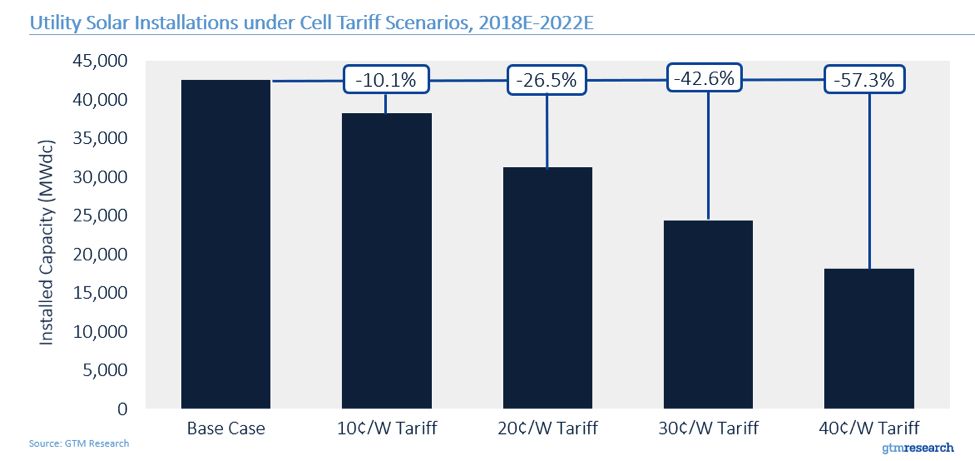
So now, with the models set and the post-hearing briefs filed, we wait to see how the International Trade Commission will vote -- and what the future of U.S. solar will hold.
For more information on GTM Research and our Section 201 modeling, visit www.gtmresearch.com or contact [email protected].
An earlier version of this article incorrectly identified Korea as an exempt geography from Section 201 tariffs. Korea is not exempt.




